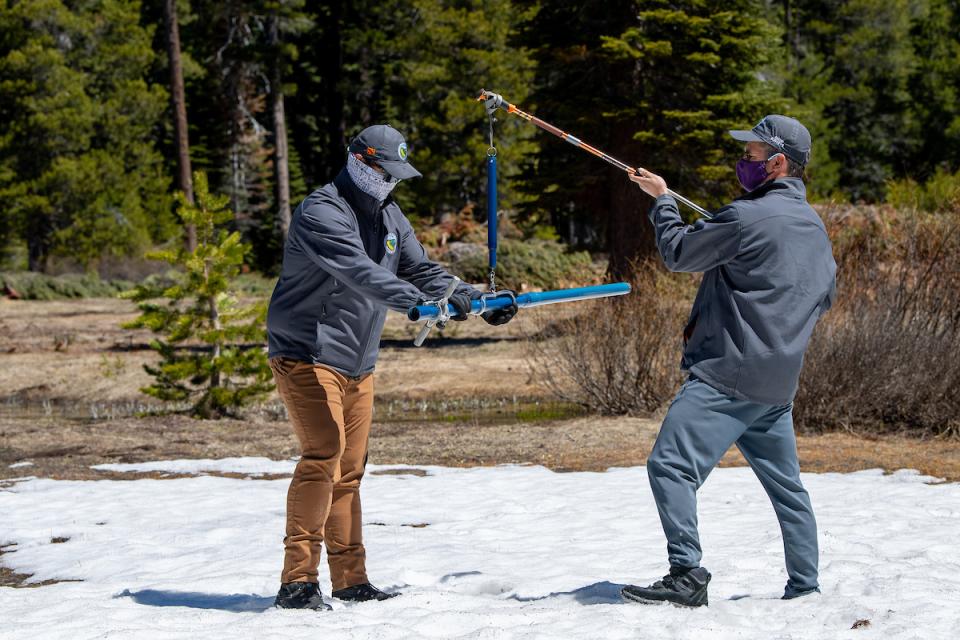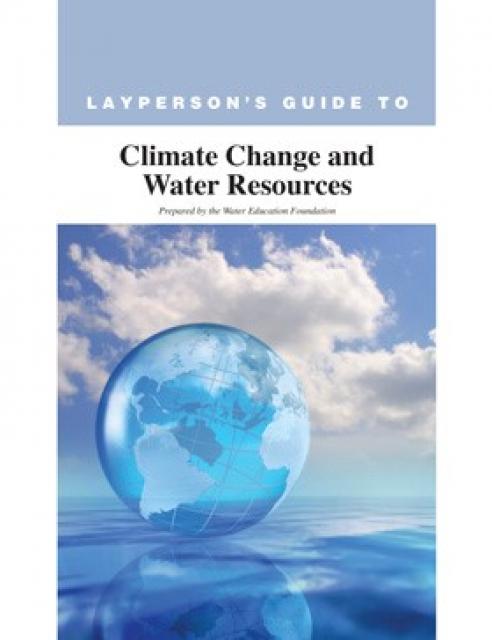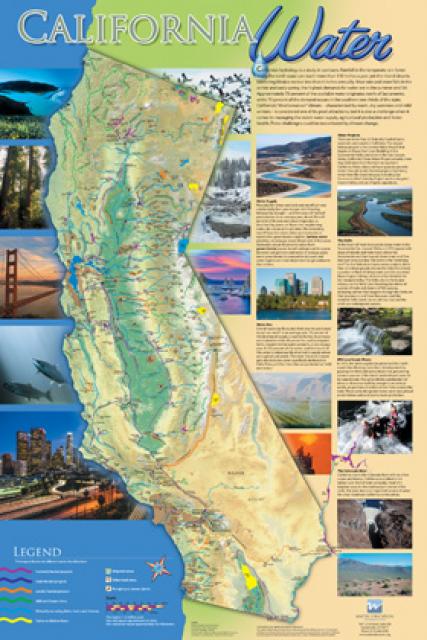Climate Change
Climate change involves natural and man-made changes to weather patterns that occur over millions of years or over multiple decades.
In the past 150 years, human industrial activity has accelerated the rate of change in the climate due to the increase in greenhouse gases (carbon dioxide, methane and nitrous oxide, among others). Scientific studies describing this climate change continue to be produced and its expected impacts continue to be assessed.
Climate change poses an “immediate and escalating threat” to California’s environment, public health and economic vitality, according to Indicators of Climate Change in California, a 2018 report by the Office of Environmental Health Hazard Assessment.
The report’s 36 indicators were grouped as human-influenced drivers of climate change, such as greenhouse gas emissions; changes in the state’s climate; impacts of climate change on the Pacific Ocean, lakes and snowpack; and impacts of climate change on people, vegetation and wildlife.
The report pointed to the devastating 2017 wildfires across the state and the record-setting 2012-2016 drought as examples of the types of climate change-related challenges that will confront California in the future.
Among other updates, the fourth edition of the report in 2024 contained a section adding a new indicator in how California tribes witnessed climate change, with eight tribes recounting their unique experiences.
California is confronting rising demand for water and diminishing supplies. At the same time, the state’s water infrastructure such as levees is aging and in disrepair—conditions expected to be made worse by climate change.
Expected Impacts in California
Facts and figures for the potential impact of climate change continue to be unveiled. Recent reports by the California Environmental Protection Agency, California Energy Commission and California Natural Resources Agency have concluded:
- Precipitation patterns are changing. More rain, less snow and shrinking glaciers in the Sierra Nevada (the primary source of much of California’s fresh water supplies) are likely. In addition, less snowpack and earlier springtime melting are reducing hydropower capacity
- The Sacramento San Joaquin Delta—California’s water hub—is sinking, putting levees at risk for failure and cities such as Sacramento at risk for flooding. In addition, rising sea levels will worsen coastal flooding and push more salty ocean water into coastal groundwater aquifers and possibly swamp key infrastructure such as airports and ports
- Hotter temperatures will lead to more wildfires of increased intensity; already more than half of California’s largest wildfires have been in the last decade. In addition, hotter weather will likely lead to more potentially lethal heat waves and related water shortages and droughts, while the cold periods in winter needed for growing fruits and nuts will be shorter
- Dry weather will lead to more tree deaths and altered vegetation patterns, with some plants moving to higher ground. More wildlife also is expected to change habitat, with some already migrating to higher ground
- Oceans and lakes are likely to see their average water temperatures rise (Lake Tahoe has risen by nearly 1 degree in the past three decades)
- Native freshwater fish are particularly vulnerable to climate change and a 2013 University of California, Davis study found 82 percent of California native fish species are at risk of extinction
- In a 2017 report, Anthropogenic Warming Impacts on California Snowpack During Drought, researchers with the Department of Atmospheric and Oceanic Sciences at University of California, Los Angeles, found that anthropogenic warming reduced average snowpack levels by 25 percent and that under a severe drought scenario, “further snowpack declines of 60 percent to 85 percent are expected, depending on emissions scenario.”
Responding to Climate Change
The focus on climate change has prompted many in the water community to call for a comprehensive response on the part of state, federal and local officials.
Many water agencies are already including climate change impacts in their long-term planning, factoring in a need for increased conservation, groundwater banking, water recycling and new surface storage projects. Also under consideration by some water districts and agencies is seawater desalination.
In 2006, then-Gov. Arnold Schwarzenegger signed into law Assembly Bill 32, making California the first state in the nation to impose a cap on all greenhouse gas emissions. The law aims to reduce the state’s emissions of carbon dioxide and other greenhouse gases by an estimated 25 percent by 2020. The state reached that goal in 2016.
In 2016, then-Gov. Jerry Brown signed legislation that requires California’s emissions to fall to 40 percent below 1990 levels by 2030. Brown followed that up in 2017 by signing legislation to extend AB 32, which requires oil refineries, power plants, food processors and other facilities to purchase permits to release carbon dioxide into the atmosphere.
In 2019, Gov. Gavin Newsom signed an executive order directing his administration to develop a comprehensive strategy to build a climate-resilient water system. The resulting Water Resilience Portfolio released in 2020 says infrastructure and management must be updated to allow capture of water when it is available in increasingly intense bursts and to provide water supplies and protect the environment during prolonged dry periods. Water managers also must address how a heightened risk of catastrophic wildfire will affect water supply and quality.
In 2024, the California Department of Water Resources released the final version of California Water Plan Update 2023, produced every five years. The plan focused on equity, watershed resilience and climate urgency and built on the Water Resilience Portfolio, and California’s Water Supply Strategy to build in future climate resiliency for the state’s water supplies. California is aiming to achieve carbon neutrality by 2045.
Still, some are skeptical of proposals to limit emissions of greenhouse gases and the potential economic impacts of such actions. Political debate has centered on the merits of the science used to justify various claims. Meanwhile, some in the business community say efforts to enact greenhouse gas emission reductions in California through arbitrary means are counterproductive, given the scale of global emissions and the fact that companies could move their operations to places without emissions caps.
While the state works to balance the needs of multiple interests, climate change and population growth pose additional future challenges.
The state’s population of about 40 million in 2020 was expected to reach 43.4 million by 2036, according to the California Department of Finance. Climate change adds complexities and questions to this growth and related environmental impacts in the future.
These remain key issues as state experts work to determine how to best incorporate a changing climate into water management planning, including flood planning due to a sea level rise, peak flow changes and a reduced snow pack.
Updated August 2025












